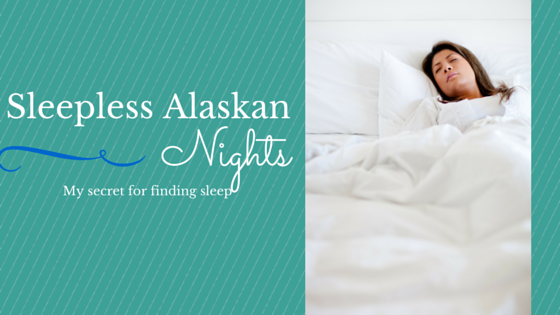Next week brings the summer solstice and for once in my life I actually somewhat look forward to the return of darkness. Crazy, right?
When we first arrived in Alaska, we arrived in early July. In July we our experiencing 19 hours of daylight and what is called ‘Civil Twilight’ at night. Meaning, full darkness doesn’t really exist. I still remember my ‘coping’ mechanism that summer. Two nights of no sleep, one night of sleep. This is how I slept (or didn’t) until darkness finally started to resume in the evening sometime in August.
Sleep masks, darkened rooms, loads of magnesium and plenty of essential oils weren’t enough. I needed to go deeper.
What happened? My circadian rhythm was completely off. And it is no wonder, our bodies are intricately linked to the rising and setting sun and without the signal of an actual setting sun, it is much more difficult to release melatonin at night.
But, we don’t have to live in a place with darn-near 24 hours of daylight to throw off our circadian rhythm. We can do that just with some increased stress in our lives. Stress can come from dysregulated blood sugar, a deadline at work, living in overwhelm, a chronic infection in the body, working swing shift, a move, etc.
To reinstate your natural circadian rhythm, you need to determine and address the cause first and foremost to have lasting results. But, while you do that, I find that supplementing with a particular nutrient very helpful at supporting and resetting the circadian rhythm.
Phosphatidylserine
Phosphatidylserine is found in every cell membrane in the body and is particularly important in brain cells. It supports signaling, memory and balancing cortisol levels, particularly when cortisol levels are high at night (which will keep you wide-awake).
Our cortisol levels should be highest in the morning and then gently drop over the course of the day to be quite low in the evening. Cortisol and Melatonin should counter-balance one another so that when cortisol is lowest, melatonin should be at its peak to help us fall asleep. When the cortisol rhythm is off, it naturally throws off our melatonin levels and therefore, our sleep.
Rather than taking some melatonin as a band-aid approach (which can continue to dis-regulate the cortisol/melatonin balance), I prefer to support an overall shift back to a more normal rhythm. By taking some phosphatidylserine in a soy-free form at 300mg per day (or 100 mg per meal) you can improve your cortisol rhythms and blessedly, return to sleep.
Our second summer in Alaska, I started using this and found that within a few weeks I was sleeping again, even before the solstice. It honestly caught me by surprise. This summer, I was prepared. As soon as I realized my sleep was leaving me, I started taking this again and was back to sleep within a couple of days.
One note: phosphatidylserine does not work in isolation, you must be addressing the root of the stressor causing your lack of sleep, but it can be a great tool to use in the process!
What are your tips for finding sleep when it escapes you? Let me know! I’d love to hear about it in the comments below. In the meantime:
Happy Solstice!
References:
Glade M.J., Smith K. Phosphatidylserine and the human brain. Nutrition. 2015 Jun; [cited Jun 2015] 31(6):781-786. doi: 10.1016/j.nut.2014.10.014. Epub 2014 Nov 4. Available from http://www.ncbi.nlm.nih.gov/pubmed/25933483
Hellhammer J1, Vogt D, Franz N, Freitas U, Rutenberg D. A soy-based phosphatidylserine/ phosphatidic acid complex (PAS) normalizes the stress reactivity of hypothalamus-pituitary-adrenal-axis in chronically stressed male subjects: a randomized, placebo-controlled study. Lipids Health Dis. 2014 Jul 31; [cited Jun 2015] 13:121. doi: 10.1186/1476-511X-13-121 Available at: http://www.ncbi.nlm.nih.gov/pubmed/25081826



Hmmm, maybe your mother needs to take this as well, especially during show season!
Love ya
Hi Mom – Actually, that might be a really good idea! XOXO – Almost there! 🙂